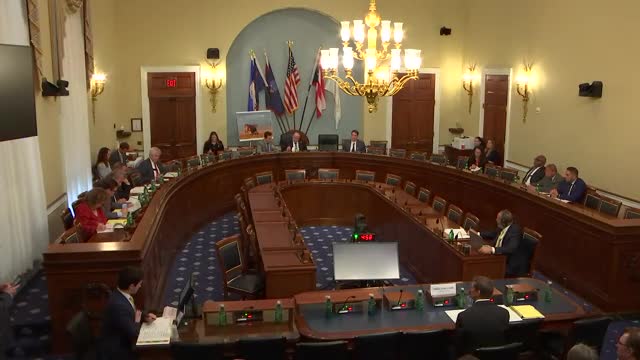Congressmen Scott and Bishop push for Georgia's first national park at Ocmulgee Mounds
December 31, 2024 | Natural Resources: House Committee, Standing Committees - House & Senate, Congressional Hearings Compilation
This article was created by AI summarizing key points discussed. AI makes mistakes, so for full details and context, please refer to the video of the full meeting. Please report any errors so we can fix them. Report an error »

In a recent legislative hearing, the U.S. House Committee on Natural Resources discussed HR 8182, a bill aimed at redesignating the Ocmulgee Mounds National Historic Park in Macon, Georgia, as the Ocmulgee Mounds National Park and Preserve. This initiative, which marks a significant step in Georgia's conservation efforts, would establish the state’s first national park, a move that has been in the works since 1934.
Congressman Austin Scott, a key proponent of the bill, highlighted the bipartisan nature of the initiative, which he co-authored with Congressman Sanford Bishop. The legislation builds on previous efforts, including the Ocmulgee National Monument boundary revision act passed in 2014, which expanded the park's area and authorized a resource study completed in 2023. Scott emphasized the importance of protecting hunting and fishing access within the preserve while respecting state regulations and private property rights.
The proposed redesignation is expected to have a substantial economic impact on the region, potentially increasing tourism and creating jobs. According to an analysis by the National Park Conservation Association, the park could see a sixfold increase in visitors over the next 15 years, generating over $34 million in annual tax revenue and supporting approximately 3,000 jobs.
Additionally, the bill addresses concerns related to Robins Air Force Base, ensuring that the park's establishment will help mitigate encroachment issues that could affect military operations. The legislation also aims to preserve the cultural heritage of the Muscogee Creek Nation, whose ancestral lands are within the proposed park boundaries, establishing a co-management model that honors their historical significance.
The hearing underscored the potential for the Ocmulgee Mounds National Park and Preserve to serve as a vital resource for both environmental conservation and economic development in Georgia. As discussions continue, stakeholders remain optimistic about the bill's prospects and its ability to enhance the region's cultural and natural landscape.
Congressman Austin Scott, a key proponent of the bill, highlighted the bipartisan nature of the initiative, which he co-authored with Congressman Sanford Bishop. The legislation builds on previous efforts, including the Ocmulgee National Monument boundary revision act passed in 2014, which expanded the park's area and authorized a resource study completed in 2023. Scott emphasized the importance of protecting hunting and fishing access within the preserve while respecting state regulations and private property rights.
The proposed redesignation is expected to have a substantial economic impact on the region, potentially increasing tourism and creating jobs. According to an analysis by the National Park Conservation Association, the park could see a sixfold increase in visitors over the next 15 years, generating over $34 million in annual tax revenue and supporting approximately 3,000 jobs.
Additionally, the bill addresses concerns related to Robins Air Force Base, ensuring that the park's establishment will help mitigate encroachment issues that could affect military operations. The legislation also aims to preserve the cultural heritage of the Muscogee Creek Nation, whose ancestral lands are within the proposed park boundaries, establishing a co-management model that honors their historical significance.
The hearing underscored the potential for the Ocmulgee Mounds National Park and Preserve to serve as a vital resource for both environmental conservation and economic development in Georgia. As discussions continue, stakeholders remain optimistic about the bill's prospects and its ability to enhance the region's cultural and natural landscape.
View full meeting
This article is based on a recent meeting—watch the full video and explore the complete transcript for deeper insights into the discussion.
View full meeting